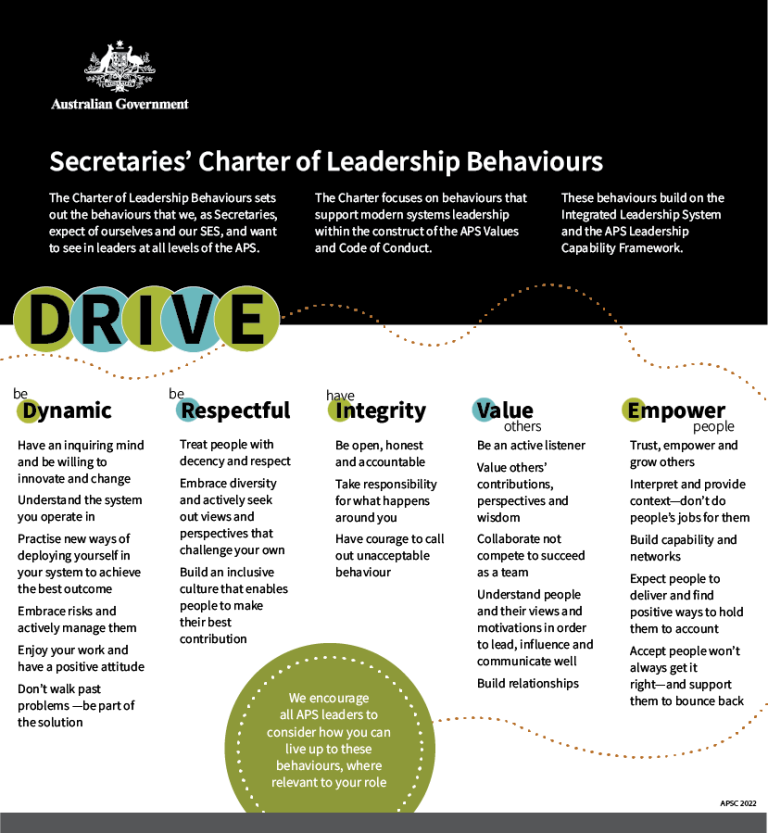3. 1 Review of hierarchy and classification
Good leaders will set the culture but still need the structures to back them in.
The independent APS Hierarchy and Classification Review identified ways the APS could streamline management, strengthen leadership and culture, and adopt more modern, agile ways of working. The aim is to reduce unnecessary hierarchy, improve decision-making and bring together the right expertise and resources to achieve the best services and outcomes for Australians.
Arising from a recommendation of the Thodey Review [30], the APS Hierarchy and Classification Review was undertaken by an independent panel comprising Dr Heather Smith PSM, Ms Kathryn Fagg AO FTSE, and Mr Finn Pratt AO PSM.
The review is fundamentally about modernising the way the APS operates, to better position itself to meet future challenges, provide more rewarding careers for employees and drive positive change for Australians in partnership with the Government. It was released on 26 August 2022.
Flexible, modern structures
The APS will take measured steps towards more modern structures and ways of working, guided by the issues raised in the review. This includes accelerating work on culture and capability and supporting agencies to adjust their structures flexibly over time in line with updated guidance on optimal management structures.
The APS Framework for Optimal Management Structures sets out design principles to guide agencies’ management structures, including the optimal number of vertical layers and management spans of control. An agency should not have more organisational layers than is necessary to perform effectively, with five to seven vertical layers seen as optimal in most cases. The framework also guides agencies on the number of direct reports a manager should have. This will vary based on the type of work and other characteristics of the operating environment.
The APS Hierarchy and Classification Review found that average spans of control across the APS are well below the benchmarks recommended in the framework, and that parts of the APS need to move to flatter, more contemporary structures and larger teams. Wider spans of control promote more effective delegation and risk-based decision-making and enable leaders to focus on the core task of ‘leading’. This will be a key area of focus in updating the framework. The work will aim to modernise management structures and ways of working, while allowing flexibility, so agencies can adjust their structures over time.
Leadership behaviours for all APS leaders
The APS Hierarchy and Classification Review highlighted the importance of great leadership to deliver a modern, responsive and empowered APS. The new Secretaries’ Charter of Leadership Behaviours translates that insight into action. The charter sets out the behaviours Secretaries expect of themselves and the SES and want to see in leaders at all levels of the APS. Introduced in 2022, the charter focuses on behaviours that support modern systems leadership within the construct of the APS Values and Code of Conduct and builds on the APS Leadership Capability Framework.
The charter establishes key leadership behaviours expected of APS Secretaries and the SES – to be dynamic, respectful, have integrity, value others, and empower people (Figure 3.1). It is being adopted within agencies where appropriate and is being embedded in agency performance and development policy and initiatives. At the whole-of-APS level, the behaviours will guide the assessment and development of leaders as the public service strengthens and diversifies its leadership pipeline under the direction of the Talent Councils, enabled by work underway in the APS Academy.
Figure 3.1: Secretaries’ Charter of Leadership Behaviours

Source: APSC

|
Read more about the Secretaries Charter of Leadership Behaviour |
| Secretaries’ Charter of Leadership Behaviours to DRIVE Great APS Leadership | ||

|
||
| 'If, regardless of formal lines, you can share ideas, empower others and draw on diversity of opinion and experience to achieve a shared goal – then you are exactly the leaders we need in the Australian Public Service.'
- Professor Glyn Davis, Secretary, Department of the Prime Minister and Cabinet, 6 September 2022 |
||
| In consultations to develop the Charter, Secretaries reflected on the importance of leaders collaborating across boundaries and working in partnership to succeed. They want to see leaders empower their people and actively seek out and value diverse perspectives, across all levels of their organisations, with less weight placed on positional authority and reporting lines. | ||
| Development of the Charter was led by then Secretary Simon Atkinson and Secretary David Fredericks, with support from the APSC. The starting point was the impact leaders have on those around them and how their behaviour influences the behaviour of their teams. Secretaries are now leading discussions in their portfolios to implement the charter, so it becomes part of the fabric of APS leadership. | ||
| 'Your teams, your staff, your people will always be watching you. Always. They will always be learning from you. They’ll always be taking their cues from you. They’ll always be making judgements about you. That can either be a burden, or it can be a wonderful opportunity.' - David Fredericks, Secretary, Department of Climate Change, Energy, the Environment and Water, 6 September 2022 |
Footnotes
[30] Commonwealth of Australia, Our Public Service, Our Future. Independent Review of the Australian Public Service, 13 December 2019.



